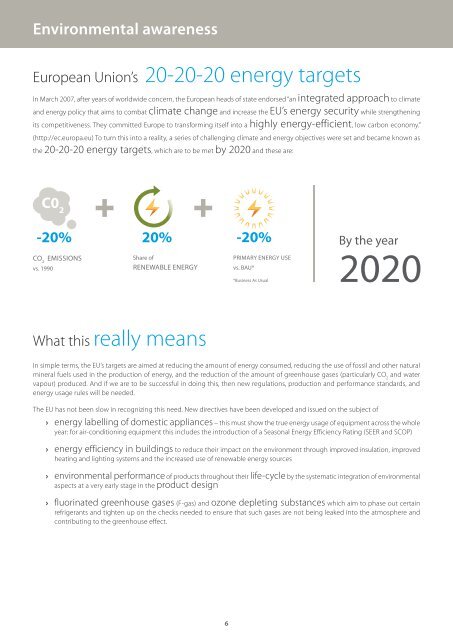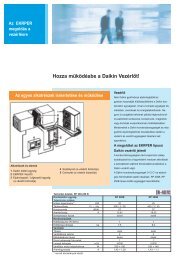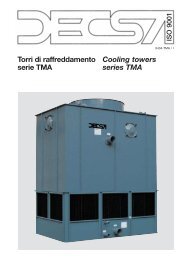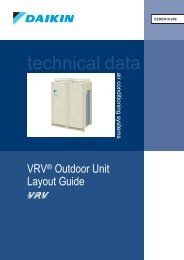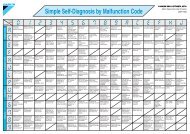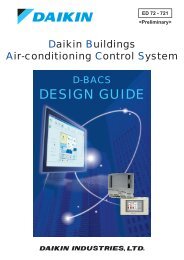VRV IV sets the standard …again - Daikin
VRV IV sets the standard …again - Daikin
VRV IV sets the standard …again - Daikin
Create successful ePaper yourself
Turn your PDF publications into a flip-book with our unique Google optimized e-Paper software.
Environmental awareness<br />
European Union’s 20-20-20 energy targets<br />
In March 2007, after years of worldwide concern, <strong>the</strong> European heads of state endorsed “an integrated approach to climate<br />
and energy policy that aims to combat climate change and increase <strong>the</strong> EU’s energy security while streng<strong>the</strong>ning<br />
its competitiveness. They committed Europe to transforming itself into a highly energy-efficient, low carbon economy.”<br />
(http://ec.europa.eu) To turn this into a reality, a series of challenging climate and energy objectives were set and became known as<br />
<strong>the</strong> 20-20-20 energy targets, which are to be met by 2020 and <strong>the</strong>se are:<br />
C0 2<br />
-20% +20% -20%<br />
CO EMISSIONS<br />
2<br />
vs. 1990<br />
Share of<br />
RENEWABLE ENERGY<br />
What this really means<br />
In simple terms, <strong>the</strong> EU’s targets are aimed at reducing <strong>the</strong> amount of energy consumed, reducing <strong>the</strong> use of fossil and o<strong>the</strong>r natural<br />
mineral fuels used in <strong>the</strong> production of energy, and <strong>the</strong> reduction of <strong>the</strong> amount of greenhouse gases (particularly CO 2 and water<br />
vapour) produced. And if we are to be successful in doing this, <strong>the</strong>n new regulations, production and performance <strong>standard</strong>s, and<br />
energy usage rules will be needed.<br />
The EU has not been slow in recognizing this need. New directives have been developed and issued on <strong>the</strong> subject of<br />
› energy labelling of domestic appliances – this must show <strong>the</strong> true energy usage of equipment across <strong>the</strong> whole<br />
year: for air-conditioning equipment this includes <strong>the</strong> introduction of a Seasonal Energy Efficiency Rating (SEER and SCOP)<br />
› energy efficiency in buildings to reduce <strong>the</strong>ir impact on <strong>the</strong> environment through improved insulation, improved<br />
heating and lighting systems and <strong>the</strong> increased use of renewable energy sources<br />
› environmental performance of products throughout <strong>the</strong>ir life-cycle by <strong>the</strong> systematic integration of environmental<br />
aspects at a very early stage in <strong>the</strong> product design<br />
› fluorinated greenhouse gases (F-gas) and ozone depleting substances which aim to phase out certain<br />
refrigerants and tighten up on <strong>the</strong> checks needed to ensure that such gases are not being leaked into <strong>the</strong> atmosphere and<br />
contributing to <strong>the</strong> greenhouse effect.<br />
6<br />
PRIMARY ENERGY USE<br />
vs. BAU*<br />
*Business As Usual<br />
By <strong>the</strong> year<br />
2020


